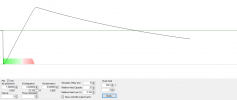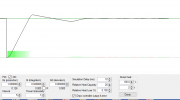- Joined
- Jun 3, 2019
- Messages
- 2,714
William - good question .... here is a shot at thoughts in reply. Since the fundamental trade-off is fine control versus fast recovery from big disturbances - the first thing would be to simply choose one or the other. The derivative term alone (when it is big) can produce fast recovery ... but at the risk of oscillations and taking a while to settle down. the derivative term alone (when it is small) can give really good stability ... but really slow recovery from big disturbances (or a start up).Because the nature of forging violates almost every condition above, how would you suggest we tweak both ones expectations and operation of these units
I think you comment about turning off the PID controller and resetting the integral when you reach your control point is a really, really good idea, and might start to buy you the "best of two worlds(though no on in their right mind would turn off a controller on a distillation column ... as things tend to go "boom"). you could use a fairly large proportional band, and an integral term that will give some "oomph" during startup. on that simulation software, that would look like this if you did not turn off the controller when you reach setpoint:

if you could re-set the integral when you reach setpoint (your turning it off and on), you would instead have something like this:

even better, you could turn off the controller when you are a few degrees below setpoint (I can not emulate that on this software).
Also .... because oscillations or other bad behavior can occur when you take a "stable" system and then disturb it (like putting a hunk of metal into a forge) ... there is really no harm at all, if those oscillations occur, in just flipping the controller off then on ... if the integral is producing those oscillations, doing that might well kill off the oscillations
